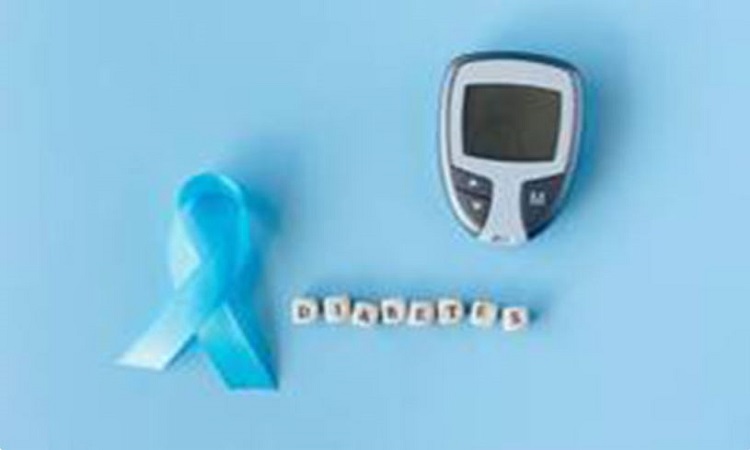Study finds childhood adversity is linked to increased risk of developing type 2 diabetes as young adults
A new study has found that individuals who experienced childhood adversity are at increased risk of developing type 2 diabetes (T2D) in early adulthood. Read further on Dynamite News:

Washington: A new study has found that individuals who experienced childhood adversity are at increased risk of developing type 2 diabetes (T2D) in early adulthood. The study was published in the journal, 'Diabetologia'.
The study aimed to determine whether there was a link between childhood adversity and the development of T2D in early adulthood (16-38 years) among men and women.
The worldwide prevalence of T2D among adolescents and young adults has increased substantially over the past century, primarily driven by changes in lifestyles and obesity rates. This is of particular concern because early onset of the disease (before 40 years of age) appears to have a more aggressive pathology, and the individuals affected are of working age, may require lifelong treatment and face an increased risk of complications. These factors combined make identifying the risk factors for T2D in early adulthood a matter of crucial importance to public health.
Childhood adversity can involve experiences such as maltreatment, physical or mental illness in the family, and poverty and has been associated with the development of diabetes even in young adults. Adverse events and circumstances can trigger physiological stress responses and affect the behaviour of the nervous system, hormones and the body's immune response. They can also impact mental wellbeing and lead to behavioural changes that negatively impact health such as poor sleep, smoking, reduced physical activity and sedentary behaviour, increased alcohol use, and unhealthy eating which can lead to obesity and an elevated risk of developing T2D.
Previous research has revealed an association between maltreatment in childhood and the development of T2D in young adulthood, but evidence for a link with other types of adversity is scarce and sex-specific estimates are lacking. The authors also note: "There is a need for methodological improvements in this research area, including a need for prospective studies using objective and more comprehensive measures of childhood adversity."
Also Read |
New medicine to lower brain pressure might treat blinding IIH headaches: Study
The researchers used data from the Danish life course cohort study (DANLIFE) which includes on the backgrounds and childhood adversities of children born in Denmark since 1 January 1980. To enable follow-up from age 16 onwards, the study sample was limited to those individuals born up to 31 December 2001 and excluded individuals diagnosed with diabetes in childhood, those with insufficient data on covariate factors, and anyone who emigrated or died before age 16.
This study population was divided into five childhood adversity groups based on annual counts of exposure (from 0 to 15 years of age) to adversities in each of three dimensions: material deprivation (family poverty and parental long-term unemployment), loss or threat of loss (parental somatic illness, sibling somatic illness, parental death, sibling death) and family dynamics (foster care placement, parental psychiatric illness, sibling psychiatric illness, parental alcohol abuse, parental drug abuse and maternal separation).
In these five groups, children experienced: 1. relatively low levels of adversity across childhood (54 per cent); 2. material deprivation specifically in early childhood (20 per cent); 3. material deprivation throughout childhood and adolescence (13 per cent); 4. relatively high levels of somatic illness or death in the family (9 per cent); and 5. relatively high levels of adversity across all three dimensions (3 per cent)
Out of the study population of 1,277,429, a total of 2,560 women and 2,300 men developed T2D during the follow-up which lasted a mean 10.8 years. The authors found that compared with the "Low adversity" group, the risk of developing T2D in early adulthood was higher in all other adversity groups for both men and women. In the "High Adversity" group, which was characterised by high rates of adversity across all three dimensions, the risk of developing diabetes was 141% higher in men and 58 per cent higher in women, translating into 36.2 and 18.6 additional cases per 100,0000 person-years among men and women, respectively.
After adjusting for parental education level, size for gestational age and preterm birth, the effect estimates were reduced, particularly for women in the "High Adversity" group. Compared to their counterparts who experienced low adversity during childhood, their additional risk of developing T2D was reduced from 58 per cent to 23 per cent, translating into 6.4 additional cases
Also Read |
TikTok Contents Of Food And Nutrition Promote Toxic Diet Culture Among Teens: Research
per 100,000 person-years instead of 18.6 per 100,000 person-years. Most of the reduction in the estimated risk was the result of adjusting for parental education level.
The authors found that the relative risks of developing T2D following childhood adversity were lower among women than men across all groups. In addition, the absolute effects (in terms of the number of additional cases of diabetes per 100,000 person-years) were also lower among women than men, except in the case of experiencing material deprivation in childhood, where the absolute effect was comparable between men and women.
The study reveals that individuals exposed to childhood adversity, such as poverty, illness or death in the family, and dysfunctional households are at higher risk of developing type 2 diabetes in young adulthood compared with those who experience low levels of adversity in childhood. These findings are strengthened by the large size of this population-based study, as well as its freedom from selection or recall bias. In addition, the authors point out that there is a close relationship between parental education levels children's experience of adversity which explains some of the observed association.
The researchers conclude that a share of the T2D cases arising in young adulthood could likely be prevented through early interventions targeting the fundamental causes of childhood adversity, to reduce or even eliminate their negative effect on children's lives. (ANI)
 Dynamite News
Dynamite News 